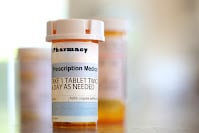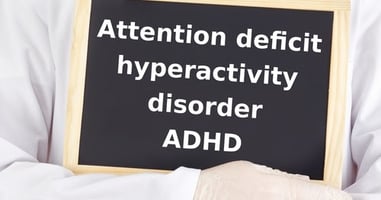The number of psychiatric hospitals owned by private equity (PE) firms increased from 42 in 2013 to...
Stimulant Prescriptions Spiked During Pandemic, CDC Report Finds

The percentage of adults receiving prescriptions for stimulants increased from 2016 to 2021 and jumped from 2020 to 2021, particularly among women, according to an article in the CDC’s Morbidity and Mortality Weekly Report.
“The prevalence of diagnosed ADHD [attention-deficit/hyperactivity disorder] and associated treatment in adults [have] increased in recent decades,” wrote Melissa Danielson, M.S.P.H., of the CDC’s Division of Human Development and Disability and colleagues. “The current study adds to evidence that the increasing trend in the percentage of adults receiving prescriptions for stimulants … continued during the COVID-19 pandemic.”
Danielson and colleagues analyzed 2016-2021 claims data from the Merative MarketScan Commercial Database, a national sample of de-identified health care claims from enrollees in employer-sponsored insurance plans. The authors included all stimulant prescriptions in the analysis, regardless of whether an enrollee’s records had any ADHD diagnosis codes present. They calculated percentages and annual changes in stimulant prescriptions for enrollees aged 5 to 64 years.
The rate of enrollees with stimulant prescriptions increased from 3.6% in 2016 to 4.1% in 2021. Across all years, the rate of male enrollees with stimulant prescriptions was highest among those aged 5 to 19 years, while the rate of stimulant prescriptions among females was highest among those aged 15 to 24 years. The largest single-year increases occurred from 2020 to 2021, with the annual change in stimulant prescriptions exceeding 10% in many age groups. The authors noted that most enrollees with stimulant prescriptions also had health care encounters with ADHD diagnosis codes.
Other findings of the report included the following:
- For both males and females, the rate of stimulant prescriptions remained stable or decreased from 2016 to 2020 among those 24 years or younger and remained stable or increased modestly among those aged 25 to 64 years.
- From 2020 to 2021, the rate of females with one or more stimulant prescription fills increased substantially among most age groups, with the largest changes among those aged 15 to 44 and 50 to 54 years (percentage changes ranged from 14.3% to 19.2% among the different age groups).
- From 2020 to 2021, the rate of males with prescription stimulant fills decreased among those aged 19 and younger and increased substantially among those aged 25 to 44 and 50 to 54 years (percentage changes ranged from 11.1% to 14.7% among the different age groups).
The authors noted that increased need, the expansion of telehealth, and relaxing the requirement for in-person care before prescribing a stimulant during the pandemic may have encouraged more adults with ADHD symptoms to seek treatment.
“Although seemingly rapid increases in ADHD treatment-seeking may alarm, this increase may be medically appropriate,” wrote Margaret Sibley, Ph.D., of the University of Washington School of Medicine and colleagues in an editorial published in the Journal of Attention Disorders. “Despite 2016 to 2021 prescribing increases in some subgroups, prescription rates came closer to ADHD’s expected prevalence in adults during this period. However, we cannot be certain that all patients prescribed stimulants have ADHD or that all prescriptions represent appropriate or effective treatment.”
For related information, see the Psychiatric News article “Symptoms, Impaired Function of ADHD Often Persist Beyond Childhood.”
(Image: iStock/DNY59)
Don't miss out! To learn about newly posted articles in Psychiatric News, please sign up here.






